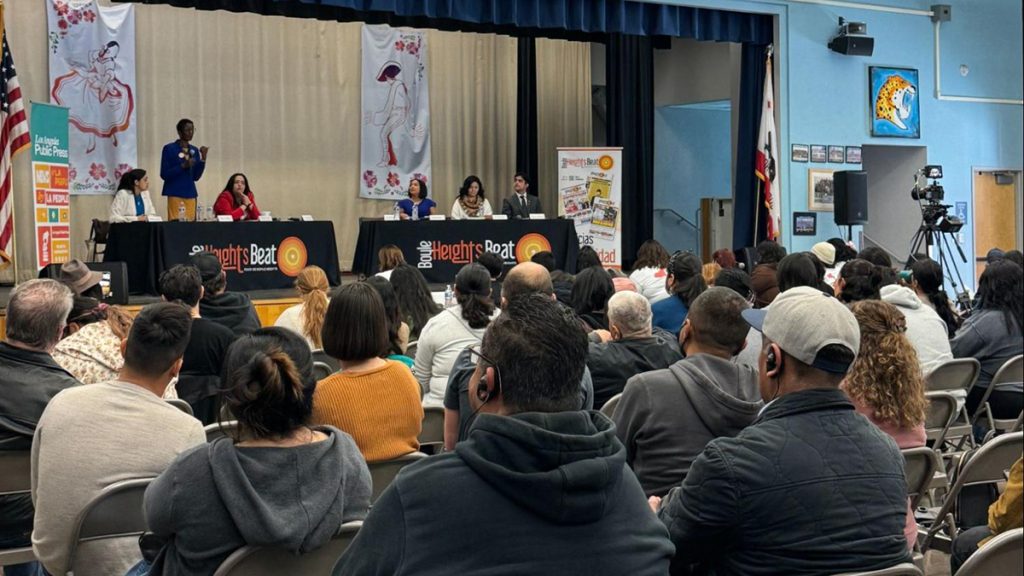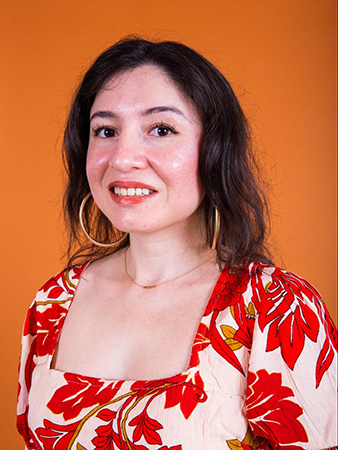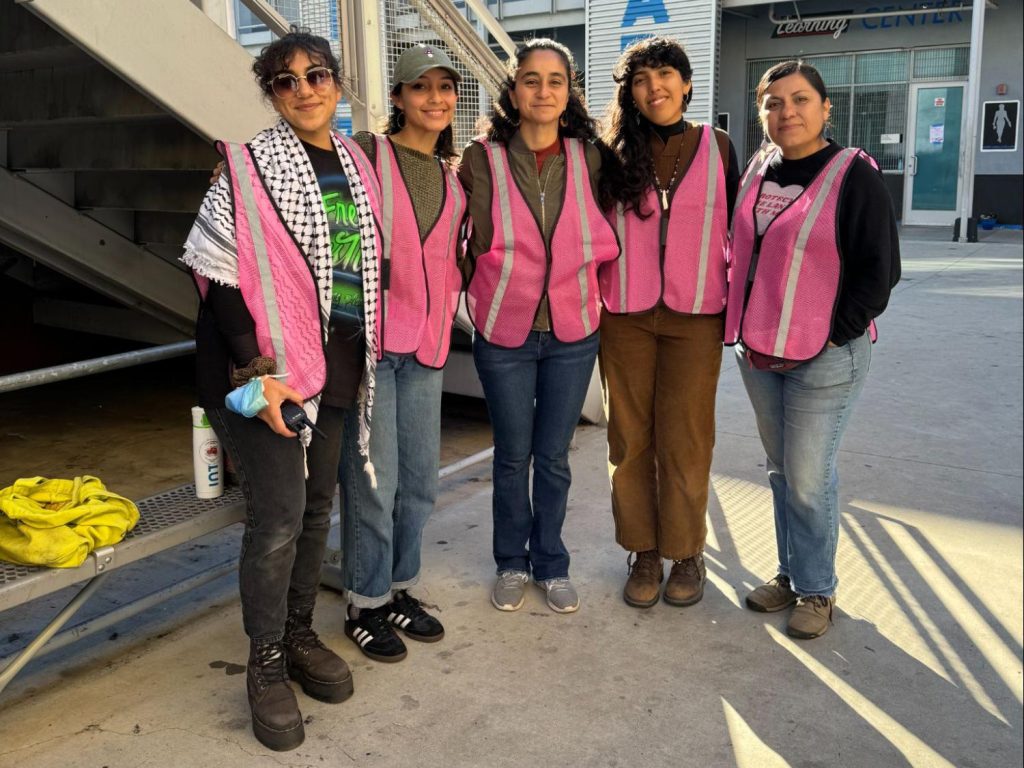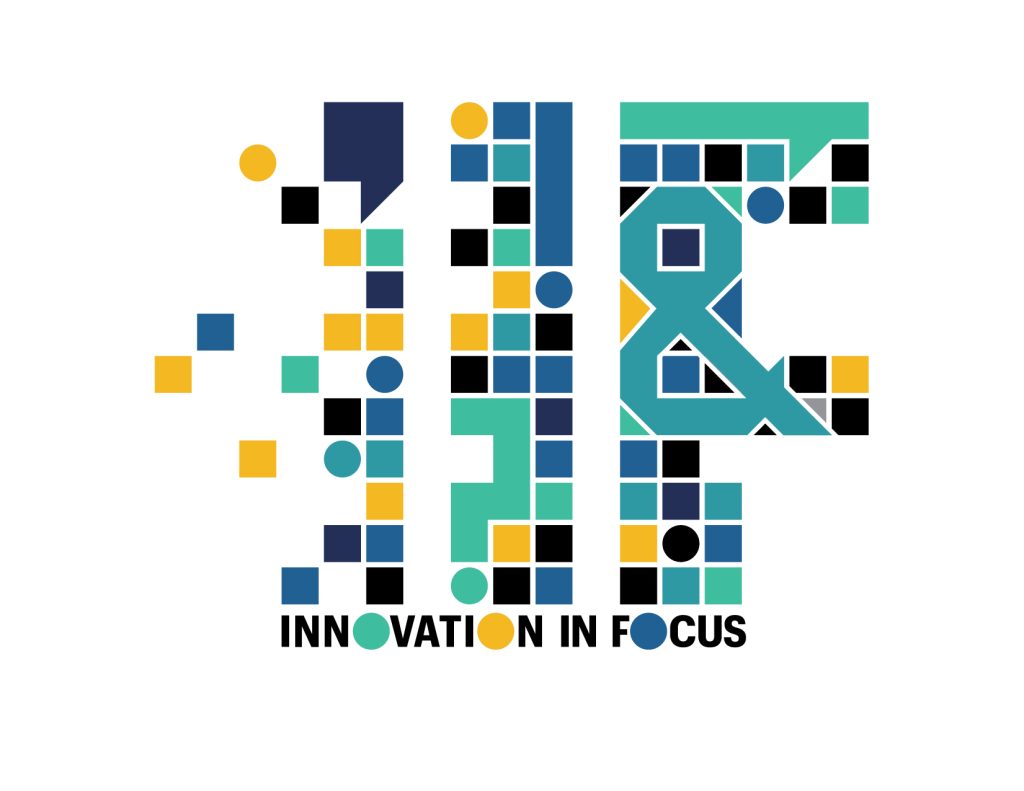
LA Public Press worked with Boyle Heights Beat to host a candidate debate for the City Council’s 14th District on Feb. 10.
How newsrooms can reimagine community safety at events
A conversation with Mariah Castañeda, LA Public Press
As the co-founder and director of audience at LA Public Press, Mariah Castañeda wants people in her community to feel invested and part of the reporting and storytelling processes. This has looked like hosting in-person events, surveying more than 800 people and creating a renters’ zine that makes housing information more accessible.
Recently, Castañeda explored one more way to involve the community when she formed a community safety team for an LA City Council candidate debate.
LA Public Press partnered with Boyle Heights Beat, a youth-run community news outlet, to host this forum for the council’s 14th district. Since protests and even physical fights have followed the district’s controversy-ridden incumbent, Kevin de León, LA Public Press knew they needed to think about safety – but they didn’t necessarily want a police presence. The alternative? Castañeda worked with a trained coordinator and recruited about a dozen people to serve on a community safety team.

In this interview with Innovation in Focus Editor Emily Lytle, Castañeda shared more about the team, the process of forming it and some lessons they learned along the way.
Lytle: Can you tell me more about the event and why you were thinking about safety alternatives?
Castañeda: District 14 is a very interesting district. That’s the same district where José Huizar — he was the city councilmember — got sentenced to 13 years in prison for federal corruption. The guy that came right after him was Kevin de León. Everywhere he goes there are lots of protests and there are a lot of folks that are rightfully upset about some things. He was on the fed tapes, so he was a part of that really racist conversation that was happening. He has not resigned even though a lot of people have told him to resign, including the president of the United States. He has also gotten into an altercation with a protester before. So, we were witnessing all this and thinking, okay, Kevin de León might show up to this event.
When we were planning the event last fall, I was thinking, I really want to make sure that the youth reporters are heard and that the audience can hear the candidates’ answers because they deserve to know what’s going on. But we also need to make sure that no altercations happen.
So, how can we keep our audience safe? How can we keep things calm? Also, I believe they were planning some police presence on campus. So there was going to be the school police and another division of police officers if Kevin de León went. I have experience with police, I used to go to an LAUSD school, and I didn’t like having the police search me. I got searched one time and it was really uncomfortable. So I wanted to make sure: how can we limit police intervention to make our communities feel safe?
Lytle: Where did the idea for the community safety team come from?
Castañeda: A lifetime ago, I was an organizer and I did safety at a protest. My job was just to make sure that nobody in my section of the protest got dehydrated, so I had water bottles to pass out. I also had to make sure that the people in my section didn’t get into traffic, that they didn’t get hurt. I even had to break up a fight. There were counter protesters there, and I had to make sure that no one got hurt. I thought, “wow, that’s a really good way of making sure that people can be civically engaged, but also stay safe” That’s really important to me.
So I talked to some folks that were also in District 14. I reached out to my friends at El Sereno Green Grocer; they’re a queer Xicana-owned grocery store, and they have a lot of events. I was like, “Hey, I’m having this event next year, and I know you all know how to do a community safety team. How do I make this happen?” Then, they connected me with Shabina Toorawa, who works there and also does community safety training.
Lytle: What was the distinction between the community safety team and police presence?
Castañeda: Often when police are intervening, it can lead to more violence or it could just lead to more people feeling scared and people not feeling good, right? Especially in our communities that have been historically overpoliced. With the community safety team, I learned de-escalation tactics. I learned how to talk to folks. I had to learn how to change my body language so when I’m talking to folks, having open communication, having an open stance.
The distinction is, first of all, we don’t carry anything; we just have a walkie-talkie, we have a bright pink vest. The idea is that we’re there making sure folks are doing well. Our intention is to ensure that everyone is safe, everything’s running smoothly, and we’re here for our communities. We’re part of the community. I want to say most of the folks on our team are from District 14.
Lytle: What were the next steps once you connected with the coordinator for the community safety team?
Castañeda: We talked about what it would even look like. We also had to find other folks to volunteer; also making sure we had the means to pay everybody. We had to go do a walk-through of the space. And once we found all the volunteers, we also did a community safety training, and we did a deescalation training at Mendez High School the week before. We also set up our positions. We had a map and we gave everybody their assignments; even I had an assignment. I was more of a floater, though. So it was cool because I got to be part of the community safety team. I was able to help create this thing, and I was able to be a part of it, too.
Lytle: How did you go about recruiting volunteers?
Castañeda: A lot of folks were people I kind of knew already who would frequent El Sereno Green Grocer. Also, Shabina had done a lot of the outreach. So the folks that ended up coming were people I had seen around a lot, but some folks that were new.
Lytle: And you made sure you could pay the people on this team?
Castañeda: We paid $25 an hour, just to make sure we could give at least some compensation for their time.
Lytle: How did you figure out how much to compensate those people, as well as how much to set aside for supplies?
Castañeda: The walkies weren’t as expensive as I thought they were going to be. I think I spent like $230 on the walkies and vests for sets of ten. And I had talked to our editorial director, and we were able to put aside $2,000 to pay everybody; so, that’s what we did. It’s because I can’t be asking anyone to do free work.

Lytle: How did everything go the day of the event? Any big takeaways?
Castañeda: So Kevin de León didn’t show up. Miguel Santiago didn’t show up. But there were still about 200 people who showed up to the event because they were so interested in supporting youth reporters and also seeing what the candidates had to say. I do think that capacity was still really necessary. But it went really smoothly. Anything we were worried about didn’t happen. There were a couple instances where my walkie went off and they’re like, “Mariah, Someone lost a phone. People want to know this. Can we get support with this? Can you answer this question for me?” So I think it did actually help direct some audience concerns, like more logistical things. We learned hand signals to communicate with each other. I think it was like if you need help you put your hand up. And then I think if you really need help, you [open and close your hand quickly.]
Lytle: What would you do differently if you do this again?
Castañeda: I would create the group chat a little bit sooner with folks on the community safety team. Just to make sure we’re able to communicate with each other and know each other ahead of time. The walkies are more what we do the day of because you don’t want to be looking at your phone too much when you’re at the event. I would probably do a little more training with the walkies, maybe the week before. Probably settling on hand signals a little bit sooner. I think now that I have seen it in action I know we can do all these things faster. There’s now a blueprint.
Lytle: What advice do you have for someone who wants to create something similar but doesn’t know where to start?
Castañeda: Ask for help. I think if you see someone in a community that’s doing an event and they have a community safety team or their events are safe, ask the people behind it. Ask their guidance and they can tell you how they do it. Look for folks that are already into de-escalation or that type of work. I think there are a lot of community safety elements that are already out in different communities, but they’re just not necessarily used in journalistic communities. Check out more community events, more community spaces, and see how they keep their spaces safe because we know that community members keep each other safe for the most part. We keep each other safe.
Be really open to learning, to trying something new, to not being an observer and to seeing yourself as a part of an ecosystem in your own community.
Editor’s Note: This interview has been edited for clarity and brevity.

Sign up for the Innovation in Focus Newsletter to get our articles, tips, guides and more in your inbox each month!
Cite this article
Lytle, Emily (2024, March 6). How newsrooms can reimagine community safety at events. Reynolds Journalism Institute. Retrieved from: https://rjionline.org/news/how-newsrooms-can-reimagine-community-safety-at-events/

Comments